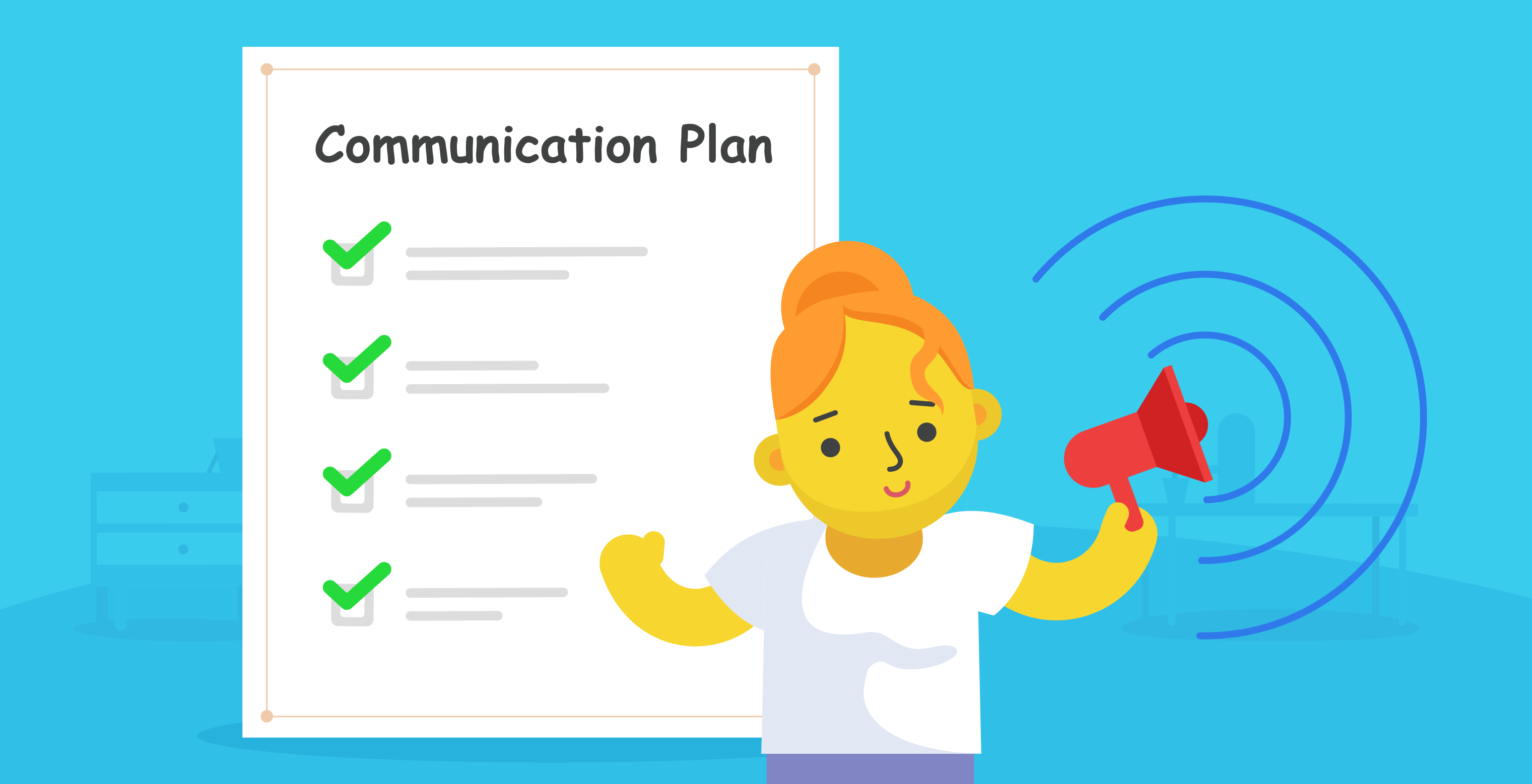Effective Communication Plan Template for Success
Ever wondered how successful companies manage to keep all their teams on the same page? The secret’s in a well-crafted communication plan. It’s a roadmap that guides all internal and external communications, ensuring everyone’s moving in the same direction.
Understanding the Basics of a Communication Plan Template

In our previous section, we uncovered the critical value a well-crafted communication plan holds for successful companies. Now, let’s delve into its blueprint— the communication plan template.
What Is a Communication Plan?
A communication plan, simply put, serves as the tactical route to effective communication within an organization. It’s not just a sheet filled with strategies and tactics, but a meticulously designed blueprint. Here, roles and responsibilities, timing, messaging, and communication channels all find a place. Usually, this plan spans various communication types— internal, external, formal, informal— ensuring it’s a sweeping documentation of processes.
A Communication Plan Template, on the other hand, is this framework’s skeleton, aiding organizations to format and organize their specific communication plans. Primarily, it eases this massive task, providing a pre-set structure that only needs filling in.
The Importance of Structured Communication in Projects
Strong, structured communication holds a pivotal role in project success. It directs operations, manages expectations, resolves conflicts, and fosters a positive environment for steady progress. In a project setting, these aspects play vital roles. For example:
- Information Flow: Structured communication enhances the flow of information among team members. Knowing who, where, and how to speak up is critical in maintaining the project’s rhythm.
- Conflict Resolution: Discrepancies and conflicts are common in projects. A structured framework ensures these issues undergo swift resolution, minimizing project delays.
- Progress Management: Regular project updates keep stakeholders in sync. With structured communication, these updates find a regular pattern, ensuring consistent transparency and alignment.
When leading projects, structured communication isn’t just a boon but a necessity. By integrating a Communication Plan Template, we lay a solid foundation for this structured communication, ultimately streamlining project operations. Following this template can provide enhanced clarity and coherence among teams while ensuring project success.
Key Elements of an Effective Communication Plan Template

Audience Analysis
Analyzing the audience ranks as the first crucial element in an effective communication plan template. It includes identifying key stakeholders who play vital roles in the project. Understand each target group’s unique needs, preferences, and ways they consume information best. For instance, a frontline employee might appreciate concise, action-oriented email bulletins, whereas a top executive could prefer comprehensive reports and strategies.
Communication Goals
Next, setting clear communication goals can ensure the message is concise and meaningful. Identify what to achieve through communication – whether it’s to inform, persuade, or connect. It is essential to align these goals with broader project objectives. For example, if the project objective is the successful launch of a new software platform, then one communication goal might be spreading awareness about the platform’s features and benefits.
Communication Channels and Tools
Third, determine suitable communication channels and tools. It is paramount to select the mediums that ensure the highest impact and delivery of the message. Channels could range from direct emails, team meetings to social media platforms, and each tool has its unique benefits and limitations. An effective plan understands and leverages these channels efficiently. If a message requires immediate attention, then a direct phone call or instant messaging would be preferred over an email.
Timelines and Frequency
Lastly, specific timelines and the frequency of communication dictate the efficiency of the entire process. Establish clear schedules for when and how often messages should be sent. Consistent communication boosts transparency and ensures stakeholders always stay updated on the project’s progress. For instance, holding weekly project meetings could provide a rhythm to updates and discussions, ensuring a smooth flow of information.
Steps to Customize Your Communication Plan Template

By using a structured and systematic approach, I am able to effectively tailor a communication plan template to suit every project’s unique requirements. This process involves the following critical steps:
Assessing Your Project’s Specific Needs
Evaluating the specific needs of your project forms the foundation of my customization process. I begin with a thorough analysis of project goals and the complexities involved. This extends to understanding the project’s size, considering crucial factors like the number of team members involved, the time frame for completion, and the desired outcomes. For instance, in a project with 20 team members aimed at developing a new software product within three months, these nuances will greatly influence the communication plan’s structure and contents.
Involving Key Stakeholders
Beyond the project’s specific needs, I also incorporate the invaluable input from key stakeholders. Their involvement invariably aids in generating a comprehensive understanding of objectives and their communication needs. For instance, a stakeholder in the quality assurance department might prefer weekly update emails to keep track of software bugs, while a project sponsor may request detailed monthly progress reports. Such varying requirements from different stakeholders must be factored into the communication plan to guarantee its effectiveness.
Mapping Out the Communication Flow
Once I have fully assessed the project’s needs and gathered essential input from stakeholders, I design the communication flow. This involves identifying what information to communicate, how often to communicate it, and the channels to use. For example, in a 6-month business process improvement project, I ensure the flow of day-to-day operational updates to team members via Slack, while decision-making information reaches the managerial team through bi-weekly in-person meetings. This strategic mapping of communication flows ultimately ensures seamless operations and contributes significantly to project success.
Utilizing Templates for Different Scenarios

Tailoring a communication plan to suit the context of individual situations optimizes effectiveness. I dive into how various plan templates may be adapted to suit three distinct scenarios: internal communications, crises, and marketing.
Internal Communication Plan Templates
Adapting a general communication plan template to cater to internal communications presents distinct advantages. These templates strive for effective information flow within an organization. Involving crucial team members bolsters the plan’s effectiveness. Say, a medium-sized organization accounting for 100 employees – the template adapts to accommodate the team size and improve interactions. Importantly, patterns of inter-departmental communication arise as the template customizes, ensuring departments are neither isolated nor overwhelmed by unnecessary information.
Crisis Communication Plan Templates
Crises are unpredictable, necessitating the need for adaptability. Tailoring a communication plan template to manage crises proves beneficial in such instances. A crisis template commonly accounts for scenarios like product recalls, cyber attacks or natural disasters. Moreover, it’s built to be quick-acting and efficient. Let’s take a cybersecurity company as an example – here, the template ensures timely communication between key stakeholders and IT teams to contain and resolve the issue swiftly.
Marketing Communication Plan Templates
A marketing communication plan template differs from other sorts, focusing on external communication with customers and potential clients. It drives brand messaging and product promotion effectively. Consider a new startup launching its first product. A well-crafted template ensures that target audiences receive consistent, engaging messages about the product across various communication channels from social media to email. It’s worth noting that a strong marketing communication plan template considers audience preferences and employs analytics to fine-tune message delivery.
Best Practices for Implementing Your Communication Plan

In the implementation journey of your communication plan, one can infuse specific, researched best practices. These practices revolve around specific factors such as monitoring feedback and iterating the plan.
Monitoring and Feedback
Monitoring your communication plan becomes crucial once rolled out. It forms the backbone of effective communication – absorbing, understanding, and actioning the responses from its recipients. A two-way communication channel proves beneficial in leveraging received feedback. For instance, after sending weekly newsletters to your team, a feedback session can reveal reader preferences, allowing for valuable adjustments. Consequently, not just enhancing the quality of your newsletters but also paving the way towards clear, open communication. Essentially, this practice makes sure tackle the unseen and unexpected challenges, thereby enhancing the reach and efficiency of your communication efforts.
Iterating and Updating the Plan
A communication plan doesn’t stand still. It has fluidity, bending and adjusting with organizational changes, external scenarios or new objectives. Therefore, it remains pertinent the regular evaluation and updating of such a plan. For instance, upon launching a new product, the marketing communication plan might need revamping – adding new channels or augmenting outreach efforts. Regular iterations keep the plan relevant and effective. However, this should result from careful analysis of insights from various feedback channels, implying a well juxtaposed iteration and monitoring process. To sum up, iteration involves not just changing the plan now and then, but making informed decisions based on metrics, feedback and changing goals.
So, embedding these practices into your approach can give your communication plan the edge, ensuring that it’s not just functional, but consistently reaching its objectives in a rewarding way. And don’t forget, communication isn’t a one-time affair. It’s a long-term commitment with regular monitoring, updating, and refinement to succeed and bring value.
Conclusion
So there you have it. Crafting a robust communication plan isn’t just about filling out a template. It’s about understanding your audience, setting clear goals, and choosing the right channels for your message. It’s about being flexible and ready to adapt, using feedback to fine-tune your approach. Whether you’re dealing with internal communications, a crisis, or a marketing campaign, a well-honed plan can make all the difference. Remember, it’s not a one-and-done deal. It’s a living, breathing document that should evolve with your project and your organization. So don’t be afraid to iterate and refine. Your communication plan is your roadmap to success. Make sure it’s the best it can be.
Frequently Asked Questions (Faqs)
What does the article stress about a communication plan?
The article stresses the importance of a well-structured communication plan. This plan should cater to specific project needs while considering factors like team size, project complexity, and stakeholder preferences.
How does audience analysis relate to a communication plan?
Audience analysis is a vital part of designing a communication plan. Understanding the audience helps determine the best ways to communicate the information effectively and ensures the message is perfectly tailored to the receiver’s needs and preferences.
What is the role of communication channels in a communication plan?
Selecting the right communication channels is crucial in a communication plan. These channels serve as conduits by which the intended message is relayed to the audience, hence enhancing the plan’s effectiveness.
Can you elaborate on the new aspect of “Monitoring Feedback”?
Monitoring feedback is a best practice when implementing a communication plan. It facilitates adjustments based on recipient responses, enabling the plan to continuously improve in its effectiveness.
What does the article mean by “Iterating the Communication Plan”?
Iterating or updating the communication plan implies its regular evaluation and modification based on changes within the organization, external scenarios, and new objectives. This practice ensures the communication plan remains relevant and effective.
Why is the refinement of a communication plan important?
Refinement ensures the long-term success of a communication plan. It aligns the plan with ongoing changes and objectives, and helps maintain its effectiveness over time, thus making it a rewardingly consistent approach to achieve communication needs.

Leave a Reply